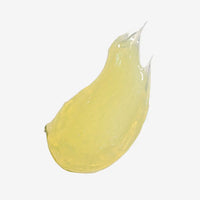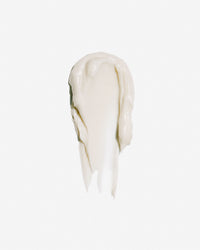What are the preconceived ideas about the sun?
Sylvie Peres : No, UV rays aren't just at the beach, when you're lying on your towel: whenever there's light, the uncovered parts of our body are attacked by UV rays, so be careful of veiled sunlight, cool winds, and walking around in the garden.
The sun is indeed beneficial for the synthesis of melatonin and serotonin, and the regulation of immunity. It is also essential for the synthesis of vitamin D, but for this: 20 minutes of daily sun exposure of the hands, face, legs, or forearms is sufficient. But above all, it is outdoor physical activities that are good for your health.
Sunscreens: How do they work?
Sylvie Peres : There are two types of filters.
Physical or mineral screens:
They act like small reflective mirrors, providing very good protection against both UV A and UV B rays. These include titanium dioxide and zinc oxide.
Titanium dioxide has long been recommended, along with zinc oxide, in sunscreens for children's protection, but it gives a white appearance. Although common among surfers, this white effect is not appreciated in the city or at the beach.
To avoid this, titanium dioxide is increasingly being used at the nanoscale.
According to ISO TS/27 687, a nanoparticle is a nano-object whose three dimensions are on the nanometric scale, i.e. a particle whose nominal diameter is less than approximately 100 nm (one nanometer = one billionth of a meter).
Titanium dioxide is not chemically toxic; it is in its nanoparticle state that it is disputed. Indeed, this miniaturization allows it to infiltrate through the membrane of our cells and thus circulate throughout our body, particularly crossing the blood-brain barrier, making accumulation in the brain possible. Their fate in the human body and in the environment is unknown. These nanoparticles are suspected of carcinogenicity, genotoxicity, and are toxic to the environment. Experts are unanimous on the need to increase research; the scale of the task is titanic. Hundreds of different nanomaterials are already on the French market. European regulations require manufacturers to clearly state the presence of nanoparticles used in food, cosmetics, disinfectant products, wood treatments, as well as innovative fabrics. But unfortunately, these regulations are poorly respected.
Chemical sunscreens:
Please note that the term "organic" is currently also used to name these filters, which can be confusing with the Anglo-Saxon term "organic" which designates bio. Chemical filters have the advantage of being colorless and of being applied in very fluid formulas. They must be applied 10 minutes before exposure to allow time for the filters to penetrate and then be able to absorb UV rays during a chemical reaction. However, they are harmful to health. In its 2006 report , the French Agency for the Safety of Health Products (Agence Française de Sécurité Sanitaire des Produits de Santé) included studies showing the estrogenic effects of 6 filters (benzophenone, homosalate, benzydilene camphor, methylcinnamate, O-PABA and dibenzoyl-methane). These chemical filters are often endocrine disruptors, so be careful with repeated applications, because remember that with endocrine disruptors it is the repeated microdoses that cause toxicity. In addition, these filters are found in toxic and carcinogenic petrochemical bases (silicones, acrylates, etc.). There is a risk of this toxicity being increased by UV rays, which are themselves carcinogenic.
Chemical filters are also toxic to the environment.
According to the highly respected journal of the American Academy of Dermatology, concerns are emerging regarding chemical UV filters, as they have been identified in waters worldwide, including fish. They are also implicated in coral bleaching. These filters are banned on certain islands (Hawaii, Micronesia).
To respect both health and the environment, we will choose non-nano-particle mineral sunscreens.
What is an SPF?
Sylvie Peres : SPF stands for Sun Protection Factor. This factor is calculated for UV B rays. For good protection, you also need protection against UV A rays, infrared rays, and even blue light. To determine the SPF of a sunscreen, a regulatory test must be performed.
There are two types of tests:
In vivo:
This test is performed after applying 2 mg per cm² to the back of a volunteer (two to four times more than what we apply in real life). In vivo, the SPF measurement is based on the time of the erythemal response (redness) due to UV B, the measurement of anti-UVA indices on persistent pigmentation (PPD).
In vitro:
The UV A and B absorption spectrum of the filter being tested (in solution or applied to a substrate mimicking the texture of the skin) is measured by transmission spectrophotometry. These are the same tests for sunscreens, whether organic or not.
These indices do not take into account the risk of chronic sun exposure. These creams only block a portion of UV rays, which prevents sunburn. As a result, we expose ourselves more, which promotes aging and skin cancer. Scientists have warned of this risk from the beginning.
These stories of indices are complicated, falsely reassuring, I like to simplify and say that an SPF 50+ which is the maximum European standard corresponds to a protection of 50% for 2 hours and if the screen is applied in a thick layer.
For me, sunscreen is a last resort, and other means are more important (shade, clothing). I give additional rules that will be even stricter if the exposure is extreme (tropical, high altitude, on the water, and extended stays). In these conditions, you must also choose sunscreens that are resistant to water and sweat.
Let's also remember that you should avoid being exposed between 10 a.m. and 2 p.m.; animals that are more sensible than us stay in the shade at these times, even though they have hair or feathers. In addition, we are 2 hours behind the sun, so if you go out at 4 p.m. it is actually 2 p.m. and at 7 p.m. (5 p.m. in reality) the sun is still strong, so it's best to go in the morning.
Also consider clouds, wind, glare, and the UV index. Defined by the WHO, it's a scale for measuring solar health risk. In Europe, it ranges from 1 to 8—maximum risk. It corresponds to the displacement of the hole in the ozone layer. If it's above you, the sun will be much more dangerous.
How and why should you protect yourself from UV rays?
Sylvie Peres : UV A and B rays are carcinogenic, but also by generating oxidizing factors (free radicals), they damage our skin and are responsible for photoaging, also known as heliodermia (wrinkles, fine lines, dull complexion due to pigmented spots and dilated blood vessels). We must also be wary of blue light (screens), whose wavelength is very close to UV.
For the face:
I recommend very strict protection of the face, neck, décolleté, and hands: because these areas are exposed daily. It's the best anti-wrinkle!
Apply a thick layer of Alaena Sunscreen SPF 50+ as soon as you are outdoors and reapply it every 2 hours. Also, wear a hat and sunglasses as much as possible.
For the body:
The best protection is shade and clothing.
At the beach, we swim and get dressed. Remember that under a parasol, with the glare, you receive 20% of the UV dose.
The SPF 50+ sunscreen formula
Sylvie Peres : When you're outdoors (sun or not), to prevent skin aging, apply our SPF50+ Sunscreen. Designed like a BB cream, it moisturizes, conceals imperfections, and evens out skin tone. Remember to protect your neck, décolleté, and hands.
Its very high protection formula contains only non-nano-particulate physical or mineral screens (zinc oxide and titanium dioxide).
Since the sun produces toxic free radicals, Alaena sunscreen is rich in antioxidants that will neutralize them as soon as they are produced: algae extract, pongamia oil, inca inchi and calophilum (tamanu) widely used in Oceania for its healing and soothing properties.




